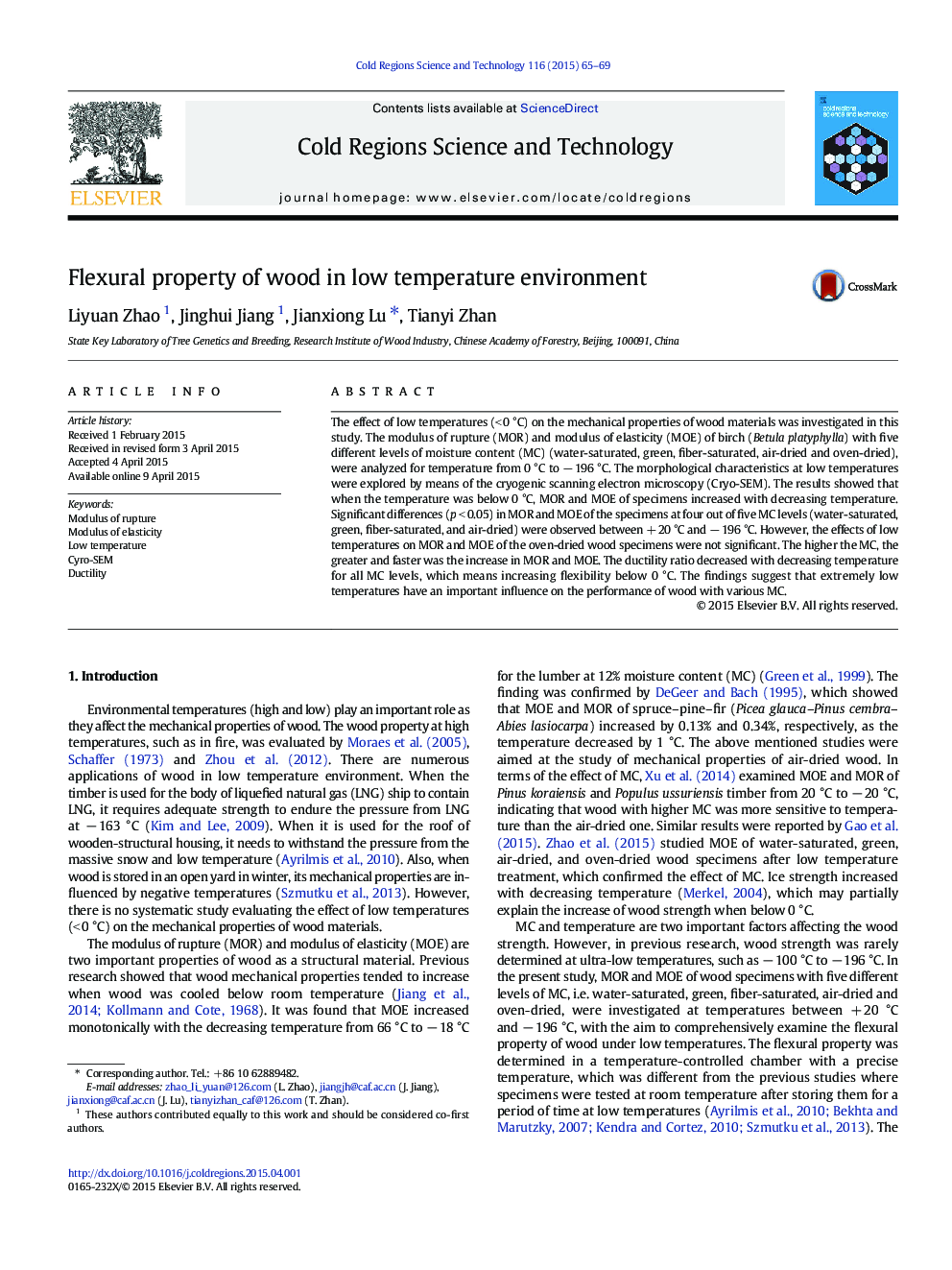| Article ID | Journal | Published Year | Pages | File Type |
|---|---|---|---|---|
| 4675698 | Cold Regions Science and Technology | 2015 | 5 Pages |
•Wood flexural property was tested precisely in a temperature-controlled chamber.•Cryo-SEM was used for observation of wood morphology.•MOR and MOE increased with the decreasing temperature from 20 °C to − 196 °C.•The higher the MC was, the greater and faster increases in MOR and MOE.•Ductility ratio reduced with the decreasing temperature below 0 °C.
The effect of low temperatures (< 0 °C) on the mechanical properties of wood materials was investigated in this study. The modulus of rupture (MOR) and modulus of elasticity (MOE) of birch (Betula platyphylla) with five different levels of moisture content (MC) (water-saturated, green, fiber-saturated, air-dried and oven-dried), were analyzed for temperature from 0 °C to − 196 °C. The morphological characteristics at low temperatures were explored by means of the cryogenic scanning electron microscopy (Cryo-SEM). The results showed that when the temperature was below 0 °C, MOR and MOE of specimens increased with decreasing temperature. Significant differences (p < 0.05) in MOR and MOE of the specimens at four out of five MC levels (water-saturated, green, fiber-saturated, and air-dried) were observed between + 20 °C and − 196 °C. However, the effects of low temperatures on MOR and MOE of the oven-dried wood specimens were not significant. The higher the MC, the greater and faster was the increase in MOR and MOE. The ductility ratio decreased with decreasing temperature for all MC levels, which means increasing flexibility below 0 °C. The findings suggest that extremely low temperatures have an important influence on the performance of wood with various MC.
